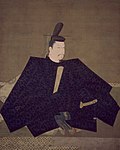teachings. One general type is called Trilakṣaṇā dharmamudrā (Sanskrit; Chinese: 三法印), or the three marks: Impermanence: All compounded things are characterized... 3 KB (322 words) - 06:23, 23 November 2023 |
Chiun (智蘊法師, 1448–1471), Priest Sōzei (宗砌法師, ??–1455), High Priest Gyōjo (法印行助, 1405–1469), Priest Nōa (能阿法師, 1397–1471), Clergyman Shinkei (権大僧都心敬; 1406–1475)... 38 KB (5,361 words) - 20:44, 8 April 2024 |
158 Lancashire 2013, p. 167 大村の郡三踊 [Ōmura Three Dances] (PDF) (in Japanese). Ōmura city. 2014. Retrieved 2018-03-17. 大村の郡三踊 [Ōmura Three Dances] (in Japanese)... 236 KB (4,937 words) - 06:47, 25 April 2024 |




